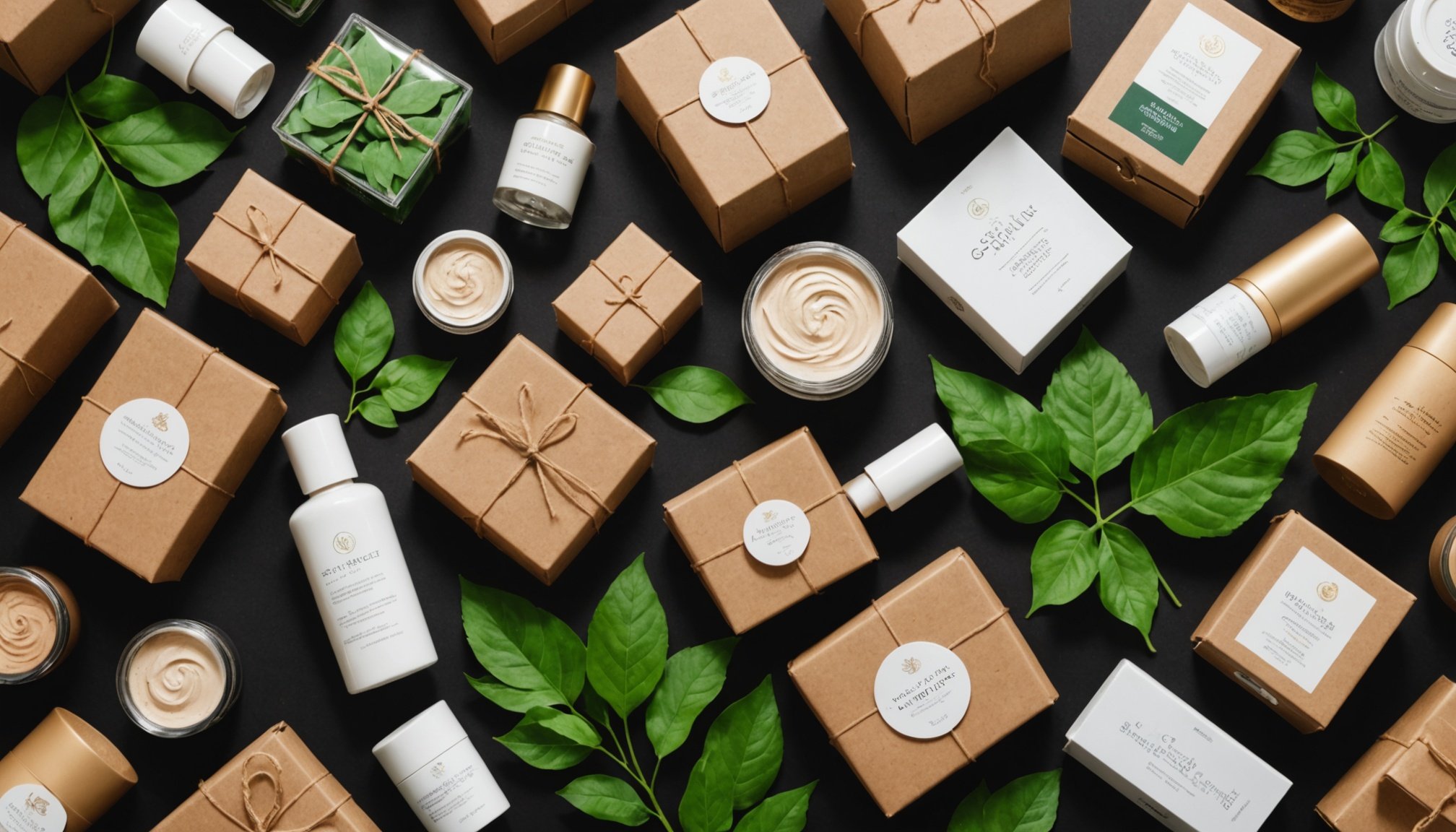Overview of Sustainable Packaging Innovations in Cosmetics
Sustainable packaging is a crucial topic within the cosmetics industry. With the growing emphasis on environmentally friendly solutions, it involves the development and integration of packaging methods that reduce environmental impact. The aim is to minimise waste and utilise renewable resources.
Recent innovations in this domain focus on biodegradable materials that break down more efficiently. For instance, some companies are experimenting with plant-based plastics that reduce reliance on traditional petroleum-based materials. Others are utilizing recyclable packaging options that support a circular economy by repurposing materials rather than discarding them.
In parallel : Essential Tactics to Protect Your UK FinTech Startup: An In-Depth Handbook
The move towards sustainable packaging has notable effects on brand reputation, with consumers increasingly favouring brands committed to ecological conservation. This shift influences consumer choice significantly; many are willing to pay a premium for products with eco-friendly packaging.
In conclusion, the drive for sustainable packaging solutions reflects broader environmental concerns, and companies adopting these practices often benefit from enhanced brand perception and loyalty. Leading to greater market competitiveness, the adoption of sustainable packaging serves both environmental and economic benefits for the cosmetics sector.
Also to discover : Revolutionizing UK Organic Food: Embracing Blockchain for Ultimate Supply Chain Transparency
Key Innovations in Sustainable Packaging Materials
The shift towards eco-friendly materials in cosmetics packaging is marked by the use of biodegradable packaging. These materials break down naturally, reducing environmental strain. Innovations focus on compostable bioplastics derived from corn or sugarcane, offering a viable alternative to traditional plastics.
Biodegradable materials are increasingly popular for brands aiming to align with sustainability goals. As these materials decompose without leaving harmful residues, they help minimize waste and appeal to environmentally conscious consumers.
Innovations in recyclable solutions also make significant strides. Reusing materials not only reduces waste but also conserves resources. Leading brands invest in recyclable and refillable packaging options, contributing to a circular economy.
Several UK cosmetics companies demonstrate the benefits of adopting such sustainable practices. For example, brands like Lush and The Body Shop consistently integrate eco-friendly packaging materials into their product lines. These companies pioneer innovative ways to reduce environmental impacts while maintaining product quality and consumer confidence.
By implementing these sustainable strategies, brands bolster their reputation and align with consumer preferences favouring environmentally friendly products, thus enhancing their market position and contributing positively to global conservation efforts.
Regulatory Guidelines for Sustainable Packaging in the UK
Navigating the UK’s regulations on sustainable packaging can be challenging for the cosmetics industry. These guidelines mandate environmentally friendly practices to reduce packaging waste and promote reuse and recycling. The compliance standards ensure that materials and designs used by brands support broader sustainable practices.
Adhering to these regulations is not only legally necessary but also crucial for maintaining brand integrity. Non-adherence can result in penalties, affecting both financial standing and reputation. Thus, understanding and implementing these standards is vital for companies to thrive in this eco-conscious market.
To support compliance, numerous resources are available. Agencies like the UK Environment Agency provide businesses with up-to-date information and guidance. Companies should routinely consult these resources to remain informed about any changes in packaging standards.
Proactive engagement with regulatory frameworks can give brands a competitive edge, highlighting their commitment to sustainability. This commitment is not just a legal requirement but an opportunity to enhance brand reputation and align with evolving consumer preferences. By integrating sustainable packaging strategies, brands can drive market demand while contributing positively to environmental conservation.
Consumer Trends towards Eco-Friendly Cosmetics
As consumers grow increasingly aware of the environmental impact of their purchases, consumer preferences for eco-friendly cosmetics continue to strengthen. The demand for products with reduced ecological footprints is fostering significant sustainability trends within the industry.
Recent statistics highlight a notable rise in the eco-conscious consumer segment, as more individuals seek out products with sustainable attributes. These trends are not just a passing phase; they reflect a deeper market shift towards long-term sustainability trends. Consumers are increasingly drawn to brands that showcase environmentally responsible practices.
Several brands have successfully catered to these changing preferences by adopting greener packaging and formulation strategies. For instance, brands that implement refillable containers or use biodegradable packaging often see a boost in consumer loyalty and market share.
As such, understanding and responding to these evolving market demands is crucial for brands looking to capture this growing segment. By aligning their operations and marketing strategies with eco-friendly principles, cosmetics companies can not only meet consumer preferences but also contribute positively to global conservation efforts, ensuring both environmental and business sustainability.
Best Practices for Implementing Sustainable Packaging Strategies
Transitioning to sustainable packaging in the cosmetics sector requires a thoughtful approach. A step-by-step guide can simplify this shift. Firstly, assess current packaging by identifying areas for improvement in materials and design. Transition to eco-friendly resources such as biodegradable packaging and recyclable solutions. It’s vital to engage with suppliers who share a commitment to sustainability, ensuring consistent quality and innovation.
Collaborating with partners can enhance sustainability efforts. Seek partnerships that offer insights and resources to support packaging strategies. This cooperation can streamline transitions to greener alternatives, benefiting brands by reducing time and costs spent on development.
To measure the success of these initiatives, implement metrics for evaluating impact. Establish benchmarks for waste reduction, recycling rates, and customer response. Regularly report these findings to stakeholders, highlighting sustainability implementation progress.
Recommendations also include using clear labelling to communicate a product’s eco-friendly attributes effectively. Transparency about sustainable practices can boost consumer trust and company reputation. Emphasize that these changes not only benefit the environment but also align with modern consumer preferences, enhancing brand loyalty and market competitiveness.
Future Trends in Sustainable Packaging for Cosmetics
The cosmetics industry is poised for exciting developments in future innovations aimed at enhancing sustainability. Emerging technologies promise to revolutionise packaging practices, facilitating further advances in eco-friendliness. These advancements might include intelligent packaging systems that monitor product freshness or innovative materials sourced from algae, which offer biodegradable solutions without compromising quality.
Predictions indicate that industry advancements will not only focus on materials but also processes. Increasingly, companies are expected to integrate blockchain technology for transparency in sourcing and production, ensuring that all packaging components adhere to strict environmental standards. This transparency could boost consumer confidence and trust.
The sustainable evolution extends beyond packaging materials to include refillable and adaptable packaging designs. The focus is on creating versatile systems that can be reused, remade, or recycled, ultimately supporting a circular economy. Continuous research and development are crucial to this progress. Investments in R&D will ensure that brands remain at the forefront of innovation, constantly developing new methods to reduce environmental footprints while meeting consumer expectations.
Exciting times lie ahead as cosmetics companies continue to adapt and innovate toward a more sustainable future, with careful attention to new technologies and materials.
Visual Examples and Case Studies from UK Cosmetics Companies
An exciting glimpse into sustainable packaging in the UK cosmetics industry showcases innovative efforts toward environmentally friendly solutions. Notable case studies reveal valuable insights into successful strategies and adaptations. Lush, for example, pioneers the use of biodegradable packaging, creatively integrating naked packaging that eliminates waste entirely. This model highlights the practical application of eco-friendly materials, setting an inspirational precedent.
Visual examples of Lush’s packaging reflect minimalist designs, showcasing bare soap bars and shampoos. These products not only appeal aesthetically but reduce environmental strain significantly. Meanwhile, The Body Shop leads with refillable options, allowing customers to bring back packaging for reuse—cementing their commitment to resource conservation.
Moreover, REN Clean Skincare exemplifies the success of recyclable solutions through partnerships with ocean clean-up initiatives. Their packaging leverages reclaimed ocean plastic, pioneering an impactful approach where design meets environmental responsibility.
These success stories exemplify how brands harness creativity and innovation, reshaping consumer expectations and enhancing market competitiveness. Observing these examples offers valuable lessons for other brands aiming to integrate sustainable practices and meet growing consumer preferences for ecological integrity.





